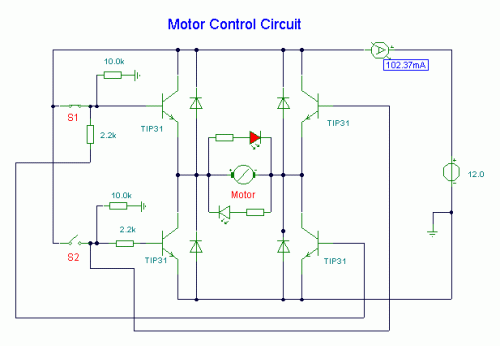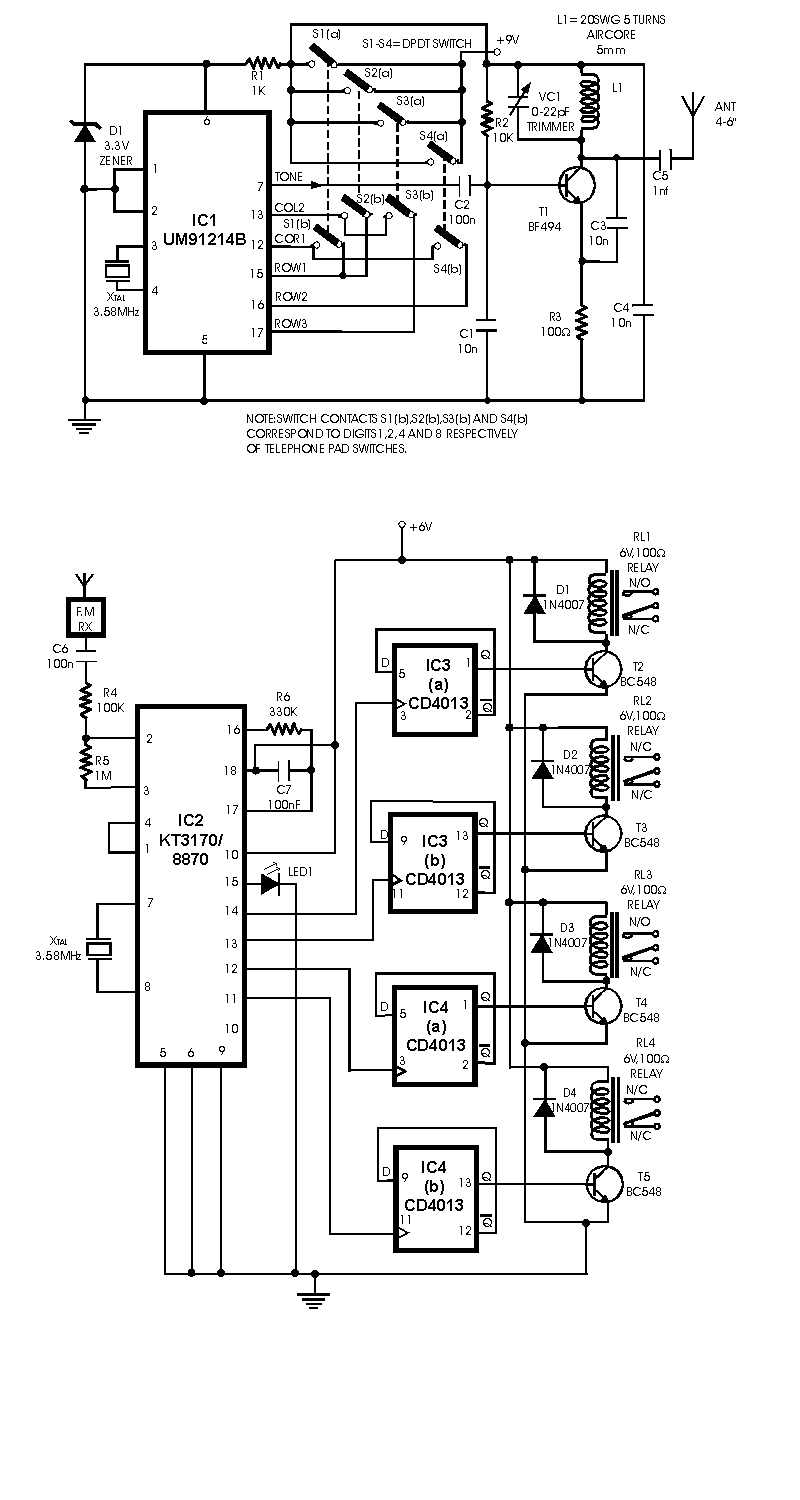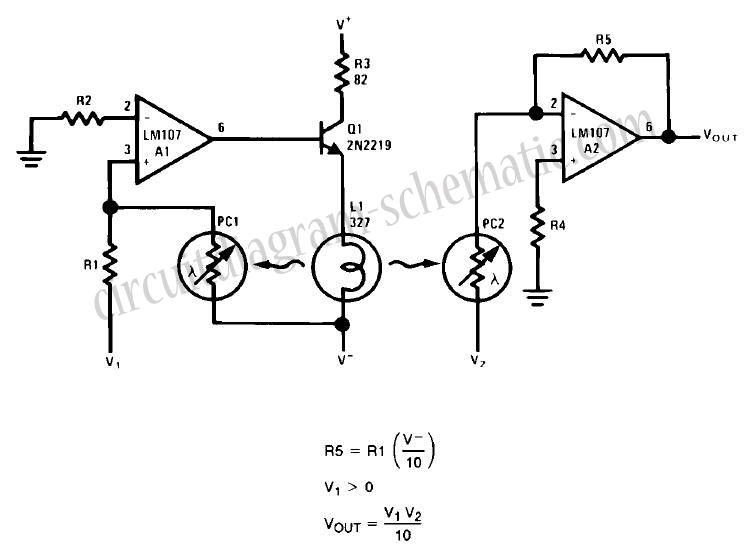
DC Motor Control Circuit

S1 and S2 are normally open, push-to-close, momentary switches. The diodes, which can be either red or green, serve solely to indicate the direction of operation. The TIP31 transistors may need to be adjusted based on the specifications of the motor in use. It is important to note that operating under load increases current draw. This circuit is designed to control a small motor for the purpose of opening and closing a pair of curtains. One advantage of this system over automatic mechanisms is the manual control it provides over the amount of light allowed into a room. The four diodes surrounding the motor function as back EMF protection diodes and should be selected according to the motor specifications. For a 12V motor with a current draw of 1 amp under load, 1N4001 diodes are recommended.
The circuit employs two momentary push-button switches, S1 and S2, which are utilized to control the direction of the motor that operates the curtain mechanism. When either switch is pressed, it completes the circuit, allowing current to flow through the TIP31 transistors, which act as electronic switches. The choice of the TIP31 transistor is critical as it must be capable of handling the motor's current requirements, particularly when the motor is under load.
The inclusion of diodes in the circuit serves a dual purpose. The first set of diodes, colored red or green, visually indicates the direction of the motor's rotation, providing an intuitive user interface. The second set of diodes, which are positioned in parallel with the motor, are specifically back EMF protection diodes. When the motor is turned off, it can generate a voltage spike due to the collapsing magnetic field, which can potentially damage the circuit components. The back EMF diodes safely dissipate this voltage spike, protecting the transistors and other sensitive components in the circuit.
For a typical application involving a 12V motor that draws 1 amp under load, the 1N4001 diodes are recommended for their adequate current and voltage ratings, ensuring reliable operation and protection. The overall design of this circuit emphasizes user control and safety, making it an effective solution for managing natural light in living spaces through manual curtain operation.Here, S1 and S2 are normally open, push to close, press button switches. The diodes can be red or green and are there only to indicate direction. You may need to alter the TIP31 transistors depending on the motor being used. Remember, running under load draws more current. This circuit was built to operate a small motor used for opening and closi ng a pair of curtains. As an advantage over automatic closing and opening systems, you have control of how much, or how little light to let into a room. The four diodes surriunding the motor, are back EMF diodes. They are chosen to suit the motor. For a 12V motor drawing 1amp under load, I use 1N4001 diodes. We aim to transmit more information by carrying articles. Please send us an E-mail to wanghuali@hqew. net within 15 days if we are involved in the problems of article content, copyright or other problems.
We will delete it soon. 🔗 External reference
The circuit employs two momentary push-button switches, S1 and S2, which are utilized to control the direction of the motor that operates the curtain mechanism. When either switch is pressed, it completes the circuit, allowing current to flow through the TIP31 transistors, which act as electronic switches. The choice of the TIP31 transistor is critical as it must be capable of handling the motor's current requirements, particularly when the motor is under load.
The inclusion of diodes in the circuit serves a dual purpose. The first set of diodes, colored red or green, visually indicates the direction of the motor's rotation, providing an intuitive user interface. The second set of diodes, which are positioned in parallel with the motor, are specifically back EMF protection diodes. When the motor is turned off, it can generate a voltage spike due to the collapsing magnetic field, which can potentially damage the circuit components. The back EMF diodes safely dissipate this voltage spike, protecting the transistors and other sensitive components in the circuit.
For a typical application involving a 12V motor that draws 1 amp under load, the 1N4001 diodes are recommended for their adequate current and voltage ratings, ensuring reliable operation and protection. The overall design of this circuit emphasizes user control and safety, making it an effective solution for managing natural light in living spaces through manual curtain operation.Here, S1 and S2 are normally open, push to close, press button switches. The diodes can be red or green and are there only to indicate direction. You may need to alter the TIP31 transistors depending on the motor being used. Remember, running under load draws more current. This circuit was built to operate a small motor used for opening and closi ng a pair of curtains. As an advantage over automatic closing and opening systems, you have control of how much, or how little light to let into a room. The four diodes surriunding the motor, are back EMF diodes. They are chosen to suit the motor. For a 12V motor drawing 1amp under load, I use 1N4001 diodes. We aim to transmit more information by carrying articles. Please send us an E-mail to wanghuali@hqew. net within 15 days if we are involved in the problems of article content, copyright or other problems.
We will delete it soon. 🔗 External reference





